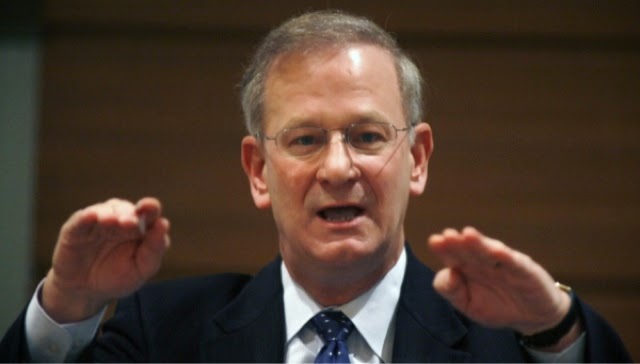My Perspective
This is where i will share whatever i think is worth sharing. It can be some news, analysis, research, my views on a subject or something i learned.
Saturday, July 5, 2014
Sunday, May 11, 2014
Yellen vs hoeing
How safe are the biggest U.S. banks? It's OK to feel confused. Two of the banking industry's most prominent overseers, Janet Yellen and Thomas Hoenig, delivered starkly contrasting messages yesterday. Their statements aren't necessarily irreconcilable. But they do help show the extent to which the debate is still raging.
Here are some of the soothing words that Yellen, the head of the Federal Reserve, told Congress yesterday. Bank-holding companies "have improved their liquidity positions and raised capital ratios to levels significantly higher than prior to the financial crisis," she said.
"Moreover, recently concluded stress tests mandated by the Dodd-Frank Act have provided a level of confidence in our assessment of how financial institutions would fare in an extended period of severely adverse macroeconomic conditions or a sharp steepening of the yield curve alongside a moderate recession. For the financial sector more broadly, leverage remains subdued and measures of wholesale short-term funding continue to be far below levels seen before the financial crisis."
Compare that with the remarks by Hoenig, the vice chairman of the Federal Deposit Insurance Corp., during a speech yesterday to the Boston Economic Club. The eight largest banks have assets equivalent to 65 percent of the country's gross domestic product, he said, and they are bigger, more complex and more interconnected than they were in 2008.
"There have been no fundamental changes in the wholesale funding markets, on the reliance of bank-like money market funds, or on the use of repos, which all are major sources of volatility in times of financial stress," Hoenig said. "While these largest firms highlight that they have added capital to strengthen their balance sheet, they remain excessively leveraged with ratios, on average, of nearly 22 to 1. The remainder of the industry averages below 12 to 1. Thus, the margin for error for the largest, most systemically important financial firms is nearly half of that of other far less systemically important commercial banks and financial firms."
There probably isn't anything inaccurate about what either of them said. It's a matter of perspective. As head of the Fed, Yellen oversees the stress tests and capital-ratio policy. She isn't going to criticize her own agency's procedures or rules. A major part of her job is to promote calm and stability in the financial system.
Hoenig, who has long been a hawk on capital, is responsible for protecting the banking industry's safety net. Quite literally, he is an insurance executive. He sees community banks struggling to compete with systemically important giants. And the FDIC is the agency responsible for resolving any banks that fail. While Yellen characterizes leverage as "subdued," Hoenig sees the numbers for the biggest banks, and they frighten him.
Yellen's precedessors, Ben Bernanke and Alan Greenspan, were famously late to say anything was seriously amiss with the country's biggest banks as they careened toward crisis. So here's one way to think about it: The Fed reacts to storms after they hit. Hoenig is an early-warning system.
Sunday, May 4, 2014
Infographics on Sachin Vs Brian Lara
Labels:
Cricket,
Infographics
Location:
Kolkata, West Bengal, India
Difference which growth can make to the country
Location:
Kolkata, West Bengal, India
Saturday, May 3, 2014
Subscribe to:
Posts (Atom)



